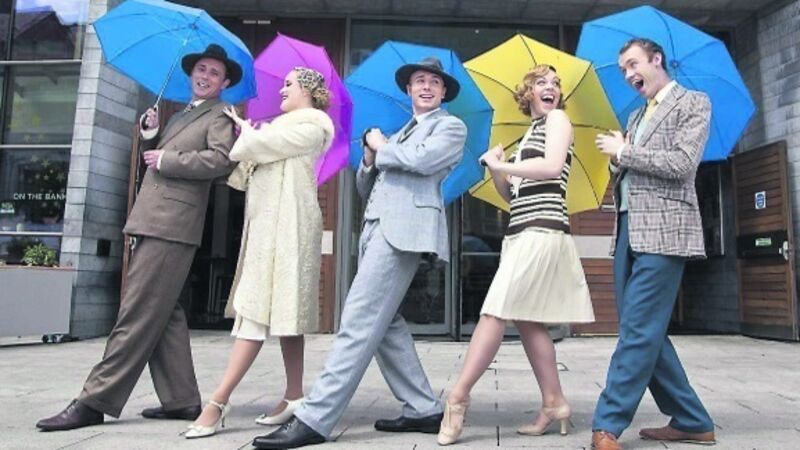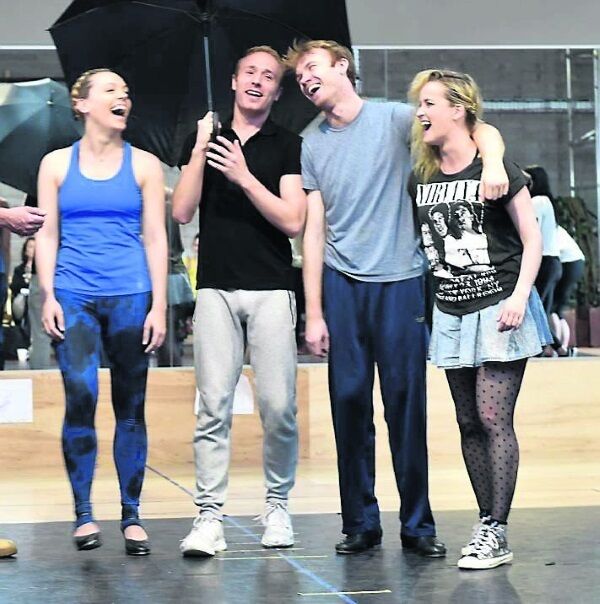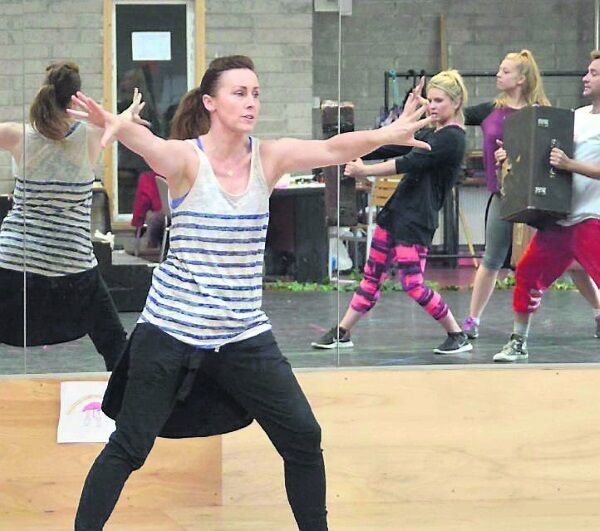A look behind the scenes of Singin’ in the Rain at Cork Opera House

When we sit in the stalls and enjoy the polished onstage spectacle that is a new musical production, we take for granted the snazzy routines, the smooth songs, the snappy dialogue. It is all presented as a perfect whole for us to admire.
But do we have any idea of just how much work goes into that finished performance? Of course not. Somehow we imagine that it just sprang into being, make-up, music, movement and all. This writer went behind the scenes to see Cork Opera House’s new summer spectacular, Singin’ In The Rain, in preparation, and it was quite an eye-opener.
The production team (Cork Opera House is getting quite a name as a building house, or a theatre where a show is conceived and prepared from scratch as opposed to being brought in as just one date on a lengthy tour) have been working on this since last year.
Once the show is decided on (it has to be a guaranteed seat-filler since summertime is not the easiest, and indeed many theatres give up and close down for the holiday season) a director and choreographer are commissioned to take the baton from there.
Boston-born director Joseph Walsh wasn’t sure whether this was the show for him or not until he met choreographer Debbie Kiernan. Once they had brainstormed together for an evening, he knew they were on to a winner. “We had the same ideas, it gelled perfectly. That’s essential if you want a successful professional production.”
Then came the auditions, first in Cork for the ensemble and then, throwing the net wider, in London for the three leading characters. “We flew over at dawn, and by evening we didn’t know if we were on our heads or our heels, but we had our leads.”
Three young professionals, Joshua Lay, Charlie Martin and Blair Anderson were chosen to play Don Lockwood, Kathy Seldon, and Cosmo Brown. Dublin girl Aisling Breen captured the delightful role of Lina Lamont, silent screen superstar, accustomed to having her own way at the snap of a finger.
DOING JUSTICE TO A CLASSIC
Everybody knows the classic 1952 film starring Gene Kelly, Donald O’Connor and Debbie Reynolds. It’s now widely regarded as the best musical film ever made, and that, says Joseph Walsh, presented a challenge right from the start.
“We wanted to give a nod to the movie, of course, but from then on we wanted to make this show our own, a one-off, that will be unforgettable and seen only here in Cork.”
When the movie was made, he explains, all three leads were already stars in their own right. “We knew we had to make the whole story work— young people trying to make their way in a world that was already changing hugely, befriending each other and becoming stronger because of that friendship.”
It is a fascinating time in movie history — when studios, after years of success in the silents, were suddenly faced with the terrifying new challenge, of sound.
“And it was as terrifying for the stars as for the directors, don’t forget. So many of them saw their careers disappear overnight because they couldn’t adapt to speaking and singing successfully. In a way, this show is a tribute to those who dropped out of sight — the Lina Lamonts really.”
The rehearsal space is packed as we tiptoe in at the back, opposite the mirrored wall where actors are already checking expressions, movements, gestures.
Groups are sitting on the floor, tying on tap shoes (this is another challenge, marrying tap, ballet, and several other dance forms in one show, as well as singing and acting), murmuring their lines to one another, stretching and bending to warm up. Oblivious to the noise around him, musical director Ronan Holohan plays silently on a keyboard, listening to the sound through headphones.
PRACTICE MAKES PERFECT
Debbie Kiernan claps her hands and calls for the Broadway ballet run-through, Holohan strikes up the catchy tune, and the cast crowd on to the stage, carrying suitcases which magically transform themselves into seats on a bus.
As ‘Gotta Dance’ rises to a crescendo, Joshua Lay leaps up on a dais and starts the catchy number, “When I hear that happy beat/ Feel like dancin’ down the street…’ and the space is a whirling mass of dancers .
The suitcases, now no longer required, are being tossed in perfect time to the beat, from one performer to another and off into the wings. The piece finishes with a flourish and happy smiles.

But Debbie is doubtful.
“”We’ll try it just one more time, will we? Then you can take five.”
In fact they do it 11 more times before she’s satisfied everyone knows exactly where they should be at every single moment. Then it’s a break for coffee. It says much for the dedication of the performers that we can’t spy even one sideways glance at the refreshments while they are going through their routine.
Debbie sits by herself, staring thoughtfully into space as she sips her coffee. “You’re always looking for the slightest little problem, because if you don’t sort it there and then, it will become a serious big problem in a day or two. If someone is in the wrong place at this moment, then they won’t be somewhere else when they should be, and worse still, they will get in someone else’s place, which would be disaster.”
NO ROOM FOR DIVAS
Walsh, she explains, writes a script for a particular scene. “Then I have the challenge of interpreting that script in movement.”

And how do her dancers react to repeating the same routine over and over again? “They’re incredible. Not a diva among them. They’ll do anything you ask, go home and work, and next day it’s better even than I’d aimed for!” The real diva of this show, she reveals, will be the rain. “We’re getting it in, but we won’t have much time for rehearsing with it. You just don’t know what will happen with that number when Josh actually has to sing it in the rain!”
The saddest point for Debbie is on opening night when she has to let go and see her cast leave her. “Suddenly I’m not needed any more and that’s always difficult. But it’s the way it works. It’s their show now and I can only watch from out front!”










